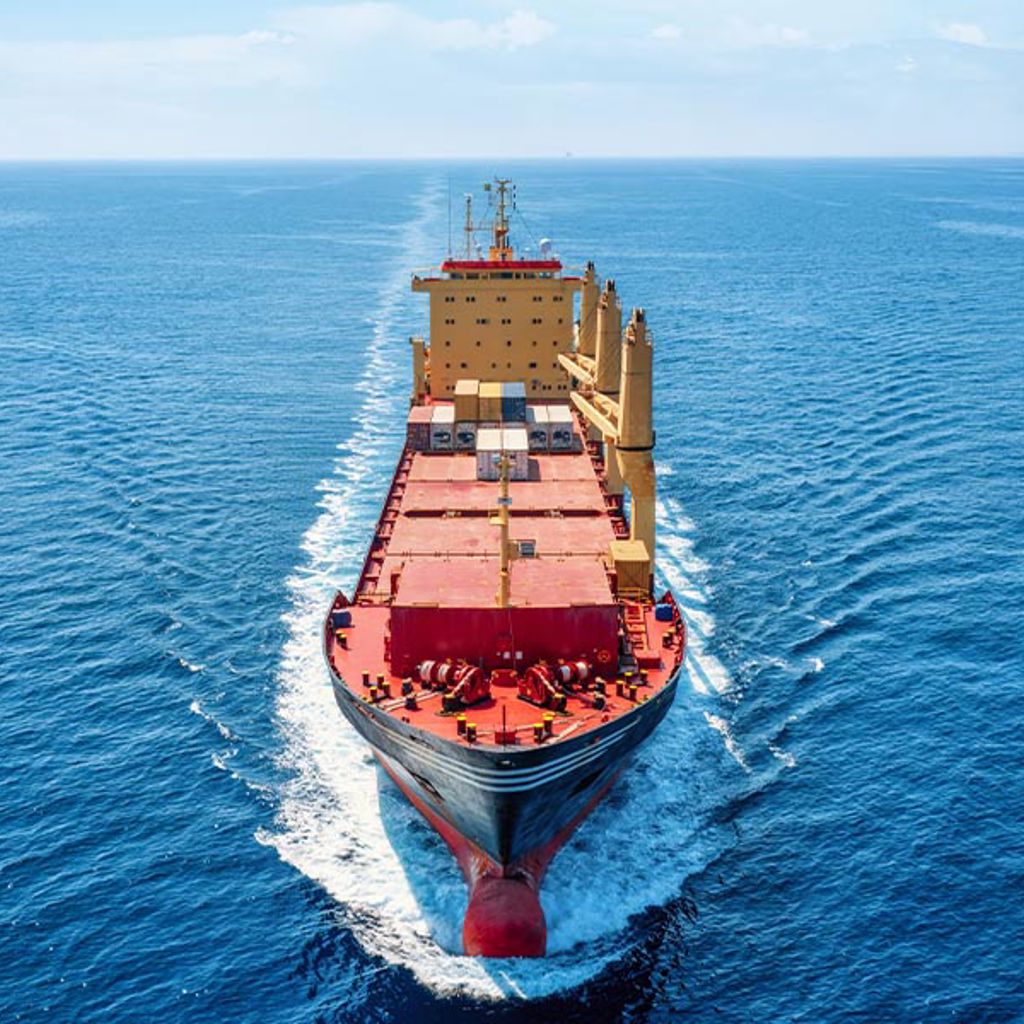Riding the wave: how transitioning to sustainable energy sources creates a competitive advantage for ports
Published in partnership with C40 Cities, this report explores how port cities can act as clean energy hubs.
Last updated: 18th September 2025
Port cities can create a wave of socioeconomic benefits for local people, businesses and investors through clean energy opportunities, a new report from built environment consultancy Arup and C40 Cities reveals.
The new “Ports as Clean Energy Hubs” report charts a course for port cities to become hubs for offshore wind, sustainable fuels, and electrification. This change could unlock billions in investment, create high-quality jobs, and deliver cleaner air for millions of people.
The report highlights innovative projects that are already underway, including the addition of battery energy storage systems to the microgrid infrastructure at the Port of Long Beach — powering critical operations during outages. Another is the transformation of the area surrounding the Port of Prince Rupert into a logistics and warehousing complex, guided by engagement with the local Indigenous community.
Transforming ports into clean energy hubs is not just about environmental policy; it’s a strategy for urban prosperity. By taking the lead on this transition, cities can:
- Create New Jobs and Industries: Ports can become manufacturing and assembly centers for renewable energy components, like offshore wind turbines, and hubs for new, quality jobs in clean technology.
- Improve Public Health: Shifting from fossil fuels to electricity and sustainable fuels for port operations and transportation can improve air quality. This can contribute to improved health of residents in port communities, who are often disproportionately affected by poor air quality.
- Boost Economic Resilience: By generating and storing their own renewable energy, cities can create a more reliable and independent power supply, helping reduce their exposure to global price volatility and supply chain disruptions.
The report spotlights three key opportunities to grow local economies, generate new jobs, and support a just transition in port cities:
- Investing in Sustainable Fuel Hubs: Ports and port cities can help the world move away from fossil fuels by becoming centers for producing and exporting cleaner fuels. This includes both clean fuel as cargo to power transport and industry and green ammonia and methanol to refuel ships. This supports global efforts to reduce emissions and creates local jobs and investment.
- Investing in Electrification Hubs: By providing clean electricity to ships, trucks and port equipment, ports can drive the shift to electrified transport and cut carbon and air pollution. Supplementing this with on-site renewable generation and storage can also create decentralised, resilient port energy systems.
- Investing in Offshore Wind Hubs: Ports can serve as vital staging grounds for manufacturing and deploying offshore wind turbines. This not only boosts exports but also creates thousands of jobs in the community.
Many cities are already showing the impact these ideas have in the real world, like Brazil’s first industrial-scale green hydrogen and ammonia facility in Camaçari, which could attract $1.5bn in private investment. Investments in clean trucks and cargo-handling equipment at the US ports of Los Angeles and Long Beach cutting air pollution and creating cleaner, healthier communities. In New York City’s South Brooklyn Marine Terminal, the development of an offshore wind hub is set to deliver 810 MW of renewable energy - enough to power 500,000 homes.
Port of Los Angeles Executive Director, Gene Seroka said, “More than a critical gateway for global trade, the Port of Los Angeles is an economic engine for jobs and innovation.
“At the same time, we’re committed to advancing sustainable operations across our port to improve public health and support our communities. It’s imperative that ports and their stakeholders around the world work together in the transformation to cleaner energy solutions.”
New York Economic Development Corporation President & CEO, Andrew Kimball said, “New York City’s transformation of the South Brooklyn Marine Terminal into the nation’s largest offshore wind port, creating thousands of good jobs and renewable energy to power 500,000 homes, exemplifies how cities can reimagine aging waterfronts as new hubs of innovation and prosperity.
“The green economy, from the South Brooklyn Marine Terminal to electric vehicle charging stations to large-scale battery storage, isn’t just about jobs today — it’s building thriving communities and climate resilience for generations of New Yorkers to come."
Sheena Kennedy, Executive Director at Oceans North, said: “Ports are front and centre in Canada’s plans for future economic growth. Canada’s large ports can be more competitive and economically stronger over the long-term with best-in-class technologies and infrastructure to increase the supply of low polluting, lower risk fuels and energy. Oceans North is working with Canadian ports and Indigenous and coastal communities to ensure the benefits of a global energy transition are shared equitably."
C40 Cities Regional Director for North America, Kate Johnson said, “Port cities across North America are vital to the global economy — and represent massive opportunities for cleaner air, jobs, and economic growth. The latest collaboration between C40 and Arup on “Ports as clean energy hubs” is an actionable framework that cities and port authorities can use to enhance our alternative energy systems, benefit the health of people and ecosystems, and boost local economies.”
Arup’s Americas Maritime Leader Jo Balmer said, “Ports are uniquely positioned to become thriving alternative energy hubs — driving economic growth, creating high-quality jobs, and securing long-term competitiveness. By integrating alternative energy sources, ports can attract new investment, stimulate innovation, and revitalise surrounding communities. Our latest report shows how this transition can empower local economies, ensuring prosperity for generations across Canada and the United States.”
Maritime at Arup
We are helping clients to shape the future of ports, maritime transport and sustainable coastal communities.
News
Explore more Americas news
New study outlines pathway for zero-emission fuel development on Canada’s west coast
15th December 2025

Finch West LRT officially opens, transforming Toronto transit
8th December 2025

New Arup-designed sidewalk sheds will transform New York City sidewalks
18th November 2025

Arup and partners announce roster of artists to create monumental commissions at John F. Kennedy International Airport
27th October 2025

Looking for a media contact?
Learn more about Arup
A global consultancy shaping infrastructure, buildings, energy and sustainability for the built environment.

